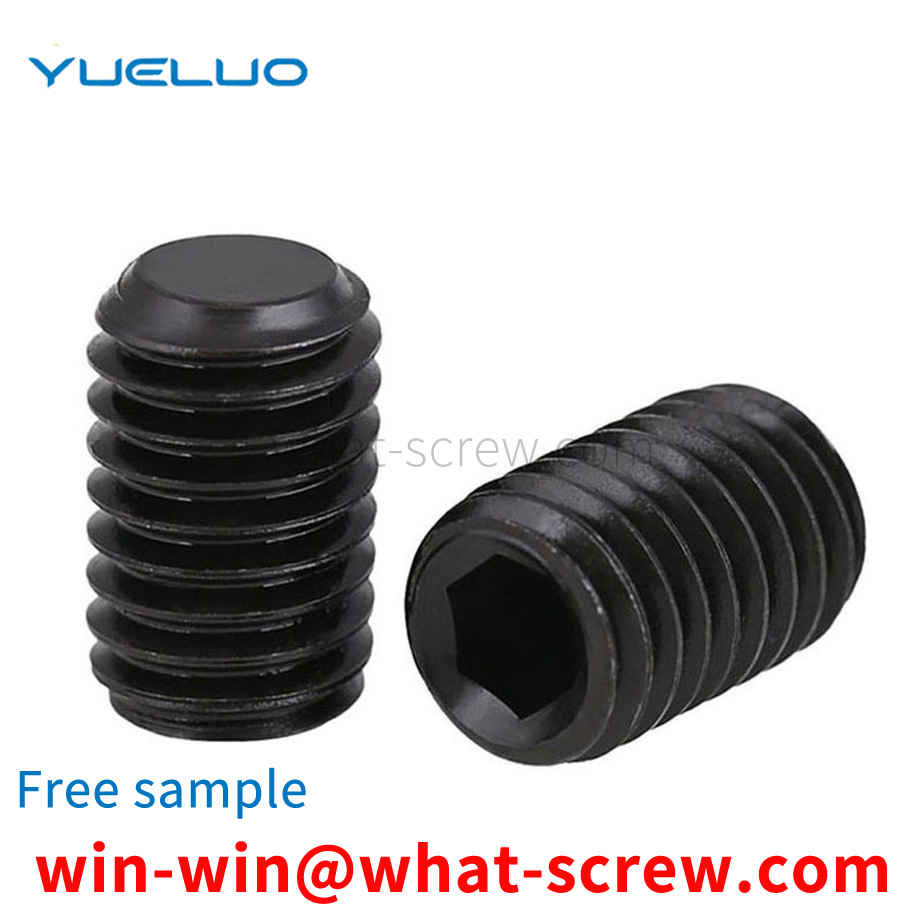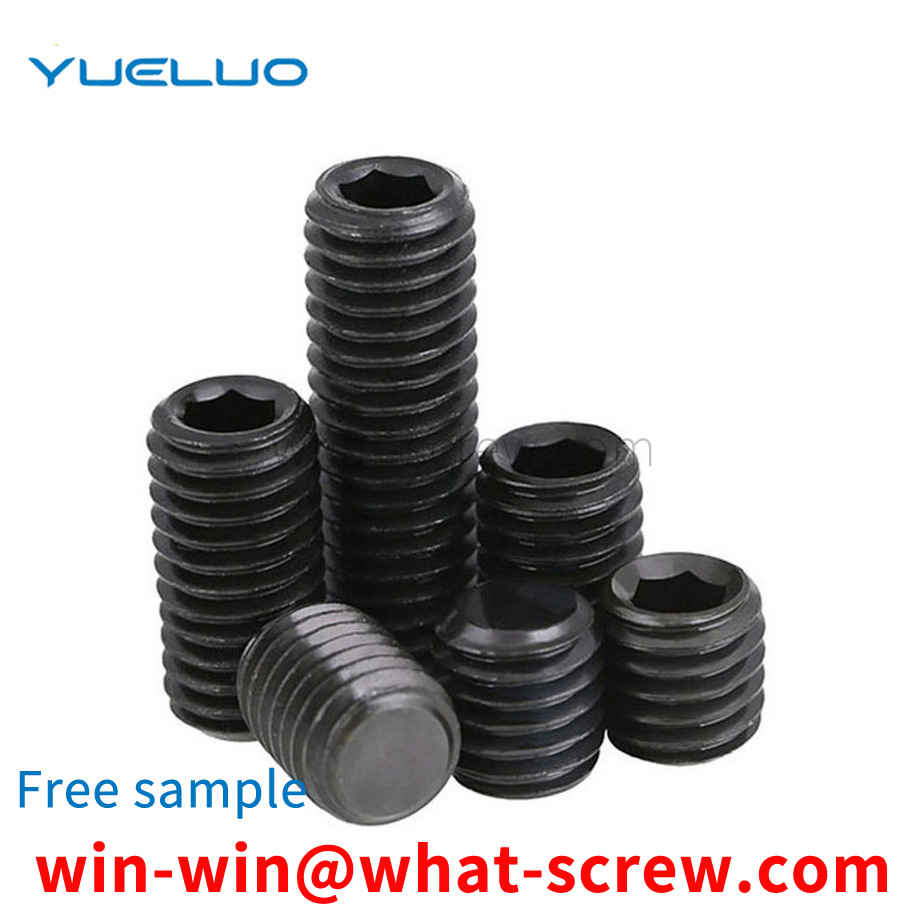1. First remove the sludge on the surface of the broken head of the broken screw, use the center gun to kill the center gun of the section, and then use an electric drill to install a drill bit with a diameter of 6-8 mm to drill the hole in the center of the section, pay attention to the hole must be drilled through. After the hole is drilled through, remove the small drill bit and replace it with a drill bit with a diameter of 16 mm, and continue to expand and drill through the hole of the broken bolt. 2. Take a welding rod with a diameter of less than 3.2 mm and use a medium and small current to carry out surfacing welding from the inside to the outside in the hole of the broken bolt. Take half of the entire length of the broken bolt at the beginning of the surfacing welding. When starting the surfacing welding, the arc should not be too long. In order to avoid burning through the outer wall of the broken bolt, surfacing to the upper end face of the broken bolt, and then continue surfacing to weld a cylinder with a diameter of 14-16 mm and a height of 8-10 mm. 3. After the surfacing is completed, hammer the end face with a hammer to make the broken bolt vibrate along its axial direction. Due to the heat generated by the previous arc and the subsequent cooling plus the vibration at this time, the broken bolt and the thread of the body will be loose in between. 4. Carefully observe, when it is found that a small amount of rust leaks from the fracture after the knock, take the M18 nut and put it on the surfacing column head and weld the two together. 5. After welding, use a torx wrench to cover the nut while it is still hot, and twist it back and forth, or tap the end face of the nut with a small hand hammer while twisting back and forth, so that the broken bolt can be taken out. 6. After taking out the broken bolt, use a suitable tap to process the thread in the frame to remove rust and other debris in the hole.
A rivet is a nail-shaped object with a cap on one end: in riveting, the parts being riveted are joined by their own deformation or by interference. There are many types of rivets, and they are informal. However, the two ends of conventional rivets are concentric, which is not suitable for special occasions.
NPT, PT, G are all pipe threads. NPT is the abbreviation of National (American) Pipe Thread, which belongs to the American standard 60-degree taper pipe thread, which is used in North America. National standards can be found in GB/T12716-1991 PT is the abbreviation of Pipe Thread, which is a 55-degree sealed conical pipe thread, which belongs to the Whitworth thread family and is mostly used in Europe and the Commonwealth of Nations. Commonly used in water and gas pipe industry, the taper is specified as 1:16. The national standard can be found in GB/T7306-2000 G is a 55 degree non-threaded sealing pipe thread, which belongs to the Whitworth thread family. Marked as G stands for cylindrical thread. National standards can be found in GB/T7307-2001 In addition, the 1/4, 1/2, 1/8 marks in the thread refer to the diameter of the pipe, and the unit is inches. People in the industry usually refer to thread size in points, 1 inch equals 8 points, 1/4 inch is 2 points, and so on. G seems to be the general name for pipe threads (Guan), and the division of 55 and 60 degrees is functional, commonly known as pipe circle. That is, the thread is machined from a cylindrical surface. ZG is commonly known as pipe cone, that is, the thread is made of a conical surface. The general water pipe joints are like this. Rc means conical internal thread ZG means taper pipe thread, 3/4 means inch mark, which is 3/4 inch conical pipe Thread, there is in the Hardware Manual. The national standard stipulates that the major diameter of ZG 3/4 thread is 26.44 mm. Please refer to Metric, American and British Thread Standard Manual (Third Edition). Its representation method should be: ZG 3 /4″. Among them (〃) is the representative symbol for inches. One inch is equal to 8 inches. The origin of 3/4 is 6/8=3/4. Commonly known as 6 points. Similarly, the major diameter of ZG 1/2″ thread≈21 mm. Commonly known as 4 points. ZG 1″ thread diameter ≈ 33 mm. Commonly known as 1 inch. ZG 1 1/2″ thread pipe outer diameter ≈ 48 mm. Commonly known as 1 inch and a half. Taper pipe thread is very similar to pipe thread, the difference is Only in the taper. Note that the basic size of the pipe thread and ordinary thread is different. DN is the nominal diameter
Ordinary nuts are suitable for use in fixed-load equipment. Ordinary nuts are used to fix on stationary workpieces and cooperate with flat and spring washers to ensure the reliability of the nut. However, on moving workpieces with vibration loads, the equipment may The vibration caused the nut to loosen. As a kind of nut, the slotted nut is used to connect the two mechanical equipment tightly. It is mainly used in the occasions with vibration load or alternating load. It is used in conjunction with the split pin to ensure the nut lock. The reliability of tightening is often used as a lock nut to prevent the main nut from loosening back.
The cylindrical pin magnetic positioning automatic press-in mechanism includes a base, a guide block is arranged on the base, one end of the guide block is provided with a guide vertical plate, and a push-up column is arranged under the end, and the push-up column is connected with a driving mechanism to drive The mechanism is arranged inside the guide vertical plate; one side of the guide block is provided with a push plate, the end of the push plate is provided with a semicircular groove, the push plate is connected to the driving mechanism, and the driving mechanism is arranged on the base The other side of the guide block is provided with a workbench located on the base, an error-proof positioning mechanism is arranged above the workbench, a press-in mechanism is arranged above the error-proof positioning mechanism, and one side of the error-proof positioning mechanism is provided. There is an error-proof detection mechanism; the press-in mechanism includes a punch, a punch block and an upper template arranged in sequence from bottom to top, and the upper template is driven and connected with five driving mechanisms; the error-proof detection mechanism includes a fixed angle plate, a fixed angle The plate is arranged on the worktable, and the fixed angle plate is provided with a four-drive mechanism, and the four-drive mechanism is connected to the detection head.
We have many years of experience in the production and sales of screws, nuts, flat washers, etc. The main products are: countersunk head built-in expansion bolts, chamfered hexagon socket screws, 304 single-strand pull rivets, core nuts and other products, we can provide you with The right fastener solution for you.



















 Service Hotline
Service Hotline




